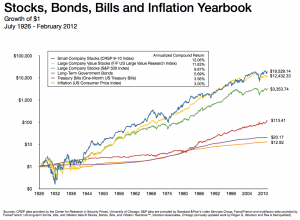A good rule of thumb when you buy or sell a stock is to make sure the commission fees don’t exceed 1% of the transaction. For example, if your broker charges $10 per transaction, and you buy $1000 of stock XYZ, you’re right at the 1% mark. When I first started buying stocks, I had no clue about this and I was buying quantities of $300, etc. I don’t think it’s necessarily a bad thing to exceed 1%, especially for more long term, safer (or boring) stocks, but it certainly shouldn’t become the norm.
A lot of advisors will suggest putting your first $10,000 into an index fund or an ETF, but I’m against this unless you’re putting your money into an IRA or another conservative retirement account. Yes, index funds and ETFs are safer investments due to their diversity, but they’re not nearly intriguing enough to keep people interested in the market. But if you’re very worried about the market and how it will affect you, you might be interested in something called ‘The Permanent Portfolio’. This is something a friend of mine mentioned to me once, and I will have to leave it up to you to investigate the details. The fund’s name is PRPFX, and it invests equally among a diverse range of stocks, bonds, and commodities. Frankly, it’s far too conservative considering how actively I check my own stocks. I mean, if you put a bunch of your money into some stocks, wouldn’t you be curious to see how it’s doing? Putting money into a really boring, safe location doesn’t create enough of a challenge for younger investors, so I always suggest individual stocks. And I’m not talking about stocks like Zynga, Facebook, or penny stocks. I’m talking about high quality, safe stocks like GE, JNJ, KO, etc.
So, take some time to research safe dividend stocks, divide your money up to avoid +1% commission fees, and get going! 🙂
